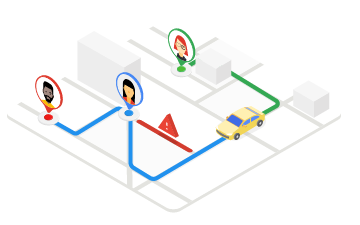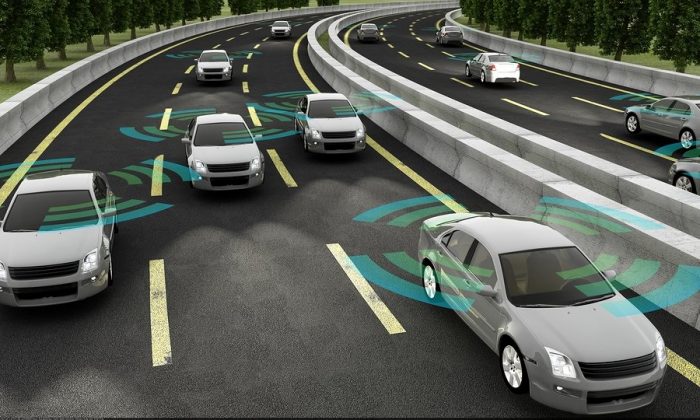Modeling and Optimizing Ridesourcing Services in Connected and Automated Cities
Background
With the wide spread of smart phone users, ridesourcing companies have made remarkable progress on serving urban travel demands by real time matching of drivers and customers. In New York City, for example, ridesourcing served 4.2 billion trips in 2018, up from about 2 billion trips in 2016. Meanwhile, the rapidly evolving vehicle automation technology promises to lead another revolution in urban mobility by reducing vehicle ownership and increasing the need for ridesourcing services. However, the rapid growth of ridesourcing will inevitably lead to more car travels and urban congestion. For this, ridesourcing, especially when CAVs are widely deployed, has to be properly integrated with public transit in order to provide more accessible and efficient means to all travelers in urban areas.
This research aims to develop modeling and analysis methods to capture the key behaviors and intersections of the major players when integrating ridesourcing with transit. In particular, the morning commute, one of the most important daily trips, which also experiences the most congestion, will be focused on. A model of fixed-route mass transit is assumed, meaning there are three major players when integrating ridesourcing and transit services with CAVs: Customers who choose mobility services based on their value of time, ridesourcing providers who usually serve customers and dispatch vehicles (CAVs) to maximize their profits, and the route choices of CAVs that impact the overall network congestion. Understanding and modeling the behavior and the interactions of these three players are crucial to answering key questions related to CAV-based ridesourcing services in urban areas.



Research Objectives
Literature Review
- With the emergence of ridesourcing services increasing attention has been made on understanding and modeling the relation between ridesourcing, transit, and how to better integrate the two, including a handful of works on CAV-based ridesourcing and transit services
- A comprehensive review of the literature on integrating ridesourcing and transit will be carried out, with specific consideration of CAVs
- The research team will identify research gaps to better scope the problem and develop the methods to address a problem that is not only scientifically interesting but also practically significant
The Modeling Framework
- A modeling framework will be created that includes three sub modules:
- Ridesourcing choice module, where platform (i.e., provider) revenue is maximized
- Customer choice module, where customers choose the type of mode from which they can have the highest utility
- Network congestion module, which captures the flow interaction and congestion effect due to CAV route choices
- The specific modeling framework will be developed, including the specific parameters to capture the choice behaviors of customers and providers, the interactions of the three players (modules), and the formulation of the overall model.
Simulation and Testing
- The modeling framework on the integration of CAV- based ridesourcing will be tested
- The usage of different modes and the overall network effect will be simulated by varying key modeling input and parameters. Specific measures that will be used include deadhead miles of ridesourcing CAVs, percentage of shared rides in terms of distance and time, and the overall VMT (vehicle miles traveled) increase or reduction
- To make the proposed modeling framework more general, several sensitivity studies will be performed by varying the neighborhood types and characteristics in testing and simulation
Final report
- The team will submit a final report, documenting the research activities, methods/algorithms developed, data, simulation/testing results, major research findings, recommendations, and outreach and tech transfer activities in the proposed project.
Deliverables
- An interim report on the literature review results and the findings in order to have a clear understanding of the state of the art and the state of the practice to help identify gaps
- An interim report on modeling development and testing using the completed modeling framework
- Final report, including simulation/testing results and major findings and recommendations, concluding the investigation of the
research and the summary of major findings/recommendations
Project Details
| Principal Investigator | Xuegang (Jeff) Ban |
| Co-Principal Investigator | Yinhai Wang |
| Co-Principal Investigator | Don Mackenzie |
| Funding Source | USDOT $55,000 University of Washington (cost-match): $27,500 |
| Total Project Cost | $82,500 |
| USDOT Award # | 69A3551747124 |
| 3/1/2020 – 2/28/2021 | |
| Implementation of Research Outcomes | Simulation testing of the proposed method; reach out to agency and industry partners to disseminate research findings. |
| Impacts/Benefits of Implementation | Understanding how to leverage CAVs for ridesharing services and to integrate with transit to improve urban mobility |







